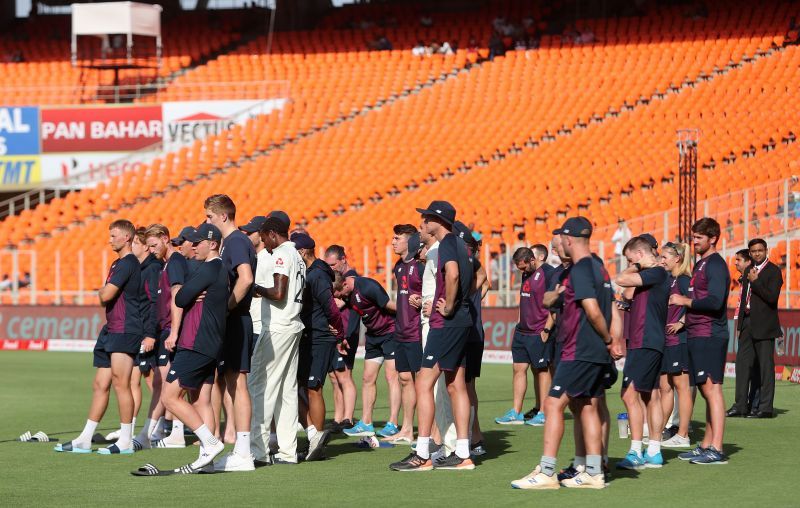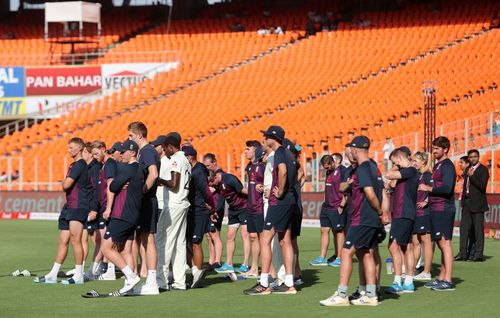
England left in a spin after rotation policy backfires

Despite their best intentions, England's rotation policy has left their Test side undermanned and outgunned after suffering a 1-3 series loss to Virat Kohli's India side in Ahmedabad.
After comprehensively defeating Sri Lanka 2-0 in January, England coach Chris Silverwood and head selector Ed Smith declared the team would be undergoing a test-by-test rotation in their test series against India.
The farcical policy meant Ben Stokes and Joffra Archer missed the Sri Lankan leg of the tour, Jonny Bairstow would miss the first two Tests against India, while Mark Wood and Sam Curran would never see action.
England's first-choice keeper, Jos Buttler, was also just penned in for the first test against India, so the rotation keeper Ben Foakes would take his place for the rest of the tour.
With the series against India reaching its conclusion with a 1-3 thumping at the hands of India, England's head honchos' rotation gamble reeks of incompetence - even if it was implemented with player safety and mental health in mind.
India is the final frontier for touring teams, and for a visiting team to succeed it needs proper preparation and sustained game time on turning pitches.
Prior to this Silverwood and Smith rotation brainwave - or brainfart - an entire team would have used the Sri Lankan Tests as a warm-up, and then gone on to India with a rough idea of what they were going to expect.
Instead, we witnessed a revolving door-style selection style that meant England's bowlers, and batsmen, were always going to be left outgunned and underprepared.
Despite England smashing India in the first Test in Chennai after skipper Joe Root made an imperious 218, and with a Dom Bess first innings 4/76 and Jack Leach's 4/76 in the second - the axe was swung.
The second Test, also in Chennai, saw Bess binned, Archer and Jimmy Anderson rested and Rory Burns dropped after a run of poor form. Oh, and Jos Buttler flew home - in line with England's preordained rotation plan.
Moeen Ali was then brought in and took eight wickets for the Test, Ollie Stone also saw some action and took 4/68 over both innings; while Stuart Broad and Foakes were in, Crawley back and Bairstow picked as the first drop despite averaging 20 in test cricket since 2017. England lost by 317 runs.
We now come to the curious part of the series. Despite his promising form in a losing effort, Ali was sent home - reportedly at his request.
Stone was replaced by the in-out-in Anderson and Broad was replaced by Archer - with Leach being picked as the only spinner on a bunsen burner of a pitch, as Bess was inexplicably left on the sidelines.
India won by 10 wickets, after spinning England out for 112 and 81.
It must be said that India also struggled on the turning Ahmedabad pitch - after England benefited, somewhat luckily, from a Joe Root 5/8. But it didn't matter to India, because their adversaries were completely outclassed, outplayed and out of form - due to a lack of game time and a shocking inability to play spin.
However, the fourth and final Test of the tour - won by India today - is where things got very weird for England.
Archer was out injured, and Broad was rested as England brought Bess back to partner Leach - leaving Anderson as the only fast-bowler. Three front-line bowlers, on a pitch that provided seam, swing and pace - as well as some turn.
India, on the other hand, played two seamers in Ishant Sharma and Mohammed Siraj, as well as spinners Washington Sundar, Axar Patel and the evergreen Ravichandran Ashwin. England were pumped by an innings.
Where this Test battle was won and lost can be argued from dusk to dawn, which it no doubt will be. But India went into this series with a solid plan: they kept the team mostly intact, and had confidence in their bowlers' playing consistent game time over the entirety of the tour, while trusting their form and ability to take wickets.
It's clear now that England failed to prepare for spinning pitches, which is almost criminal when touring India, and when combined with a complete inability to read conditions, should explain this series loss.
But Silverwood and Smith's last-minute decision to mess with the side so soon after a series win in spin-friendly Sri Lanka, as well as in India, must also come under the microscope.
How on earth did England's brain trust think this series was going to work out after leaving Root with limited bowling options when games were on the line?
What is clear now that the dust has settled is that tinkering with a side mid-series smacks of arrogance and complacency by England.
Thinking they could win, or even compete, when their side was transitioning each-and-every game was only going to lead to one result, and that was a 1-3 thumping to an Indian side that was confident, well-drilled and who undoubtedly benefited from consistent team selection - unlike England.